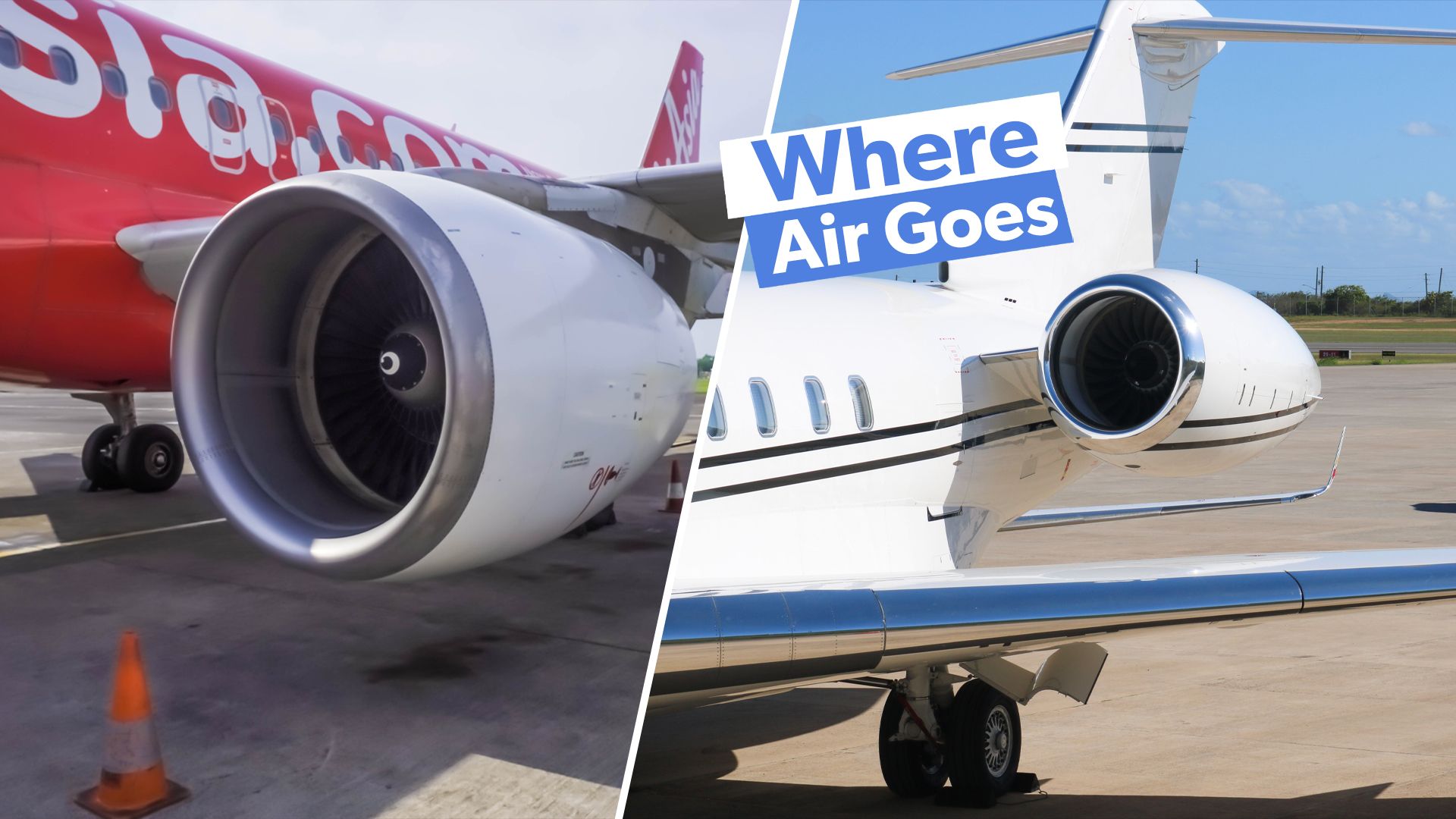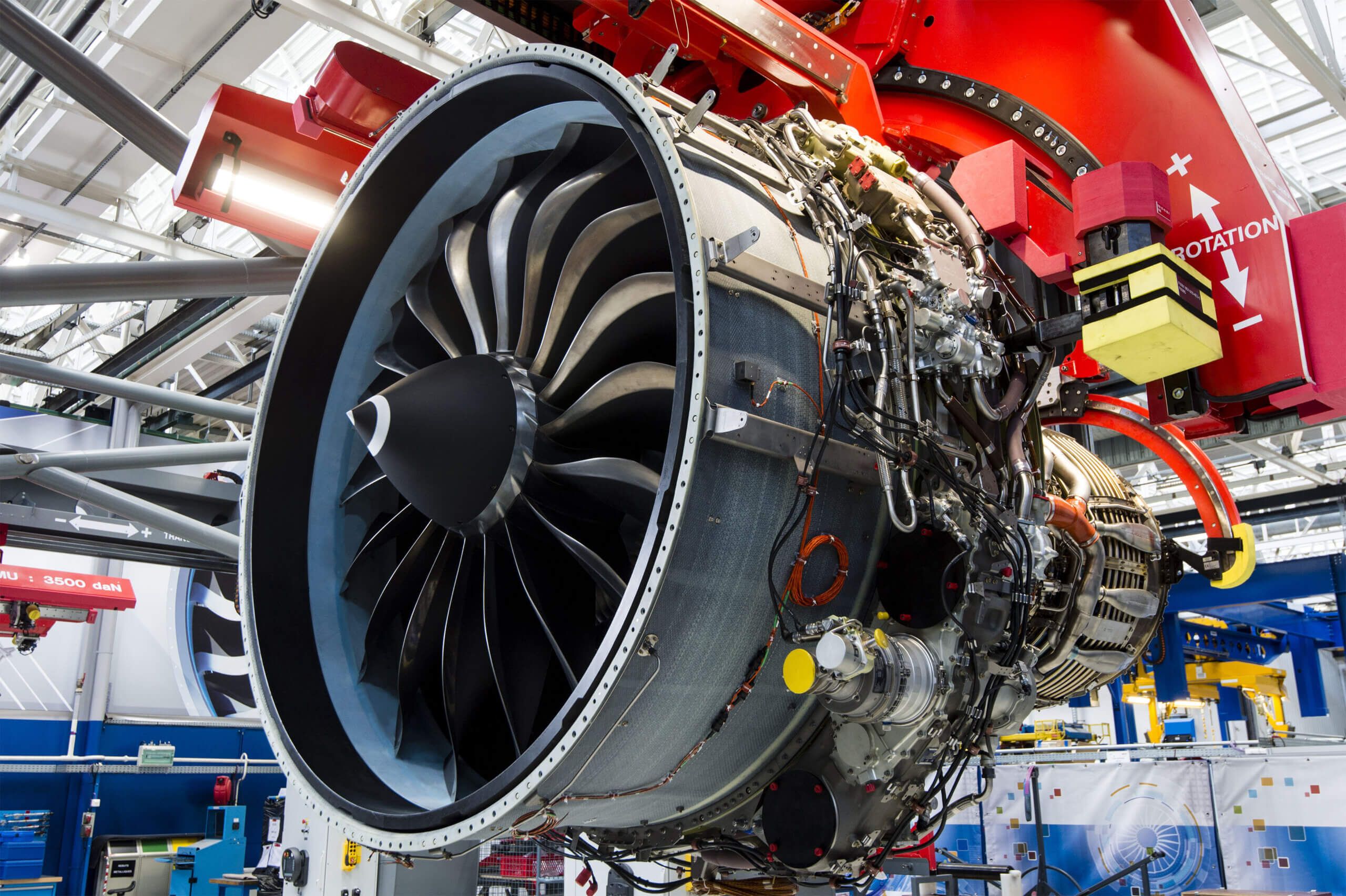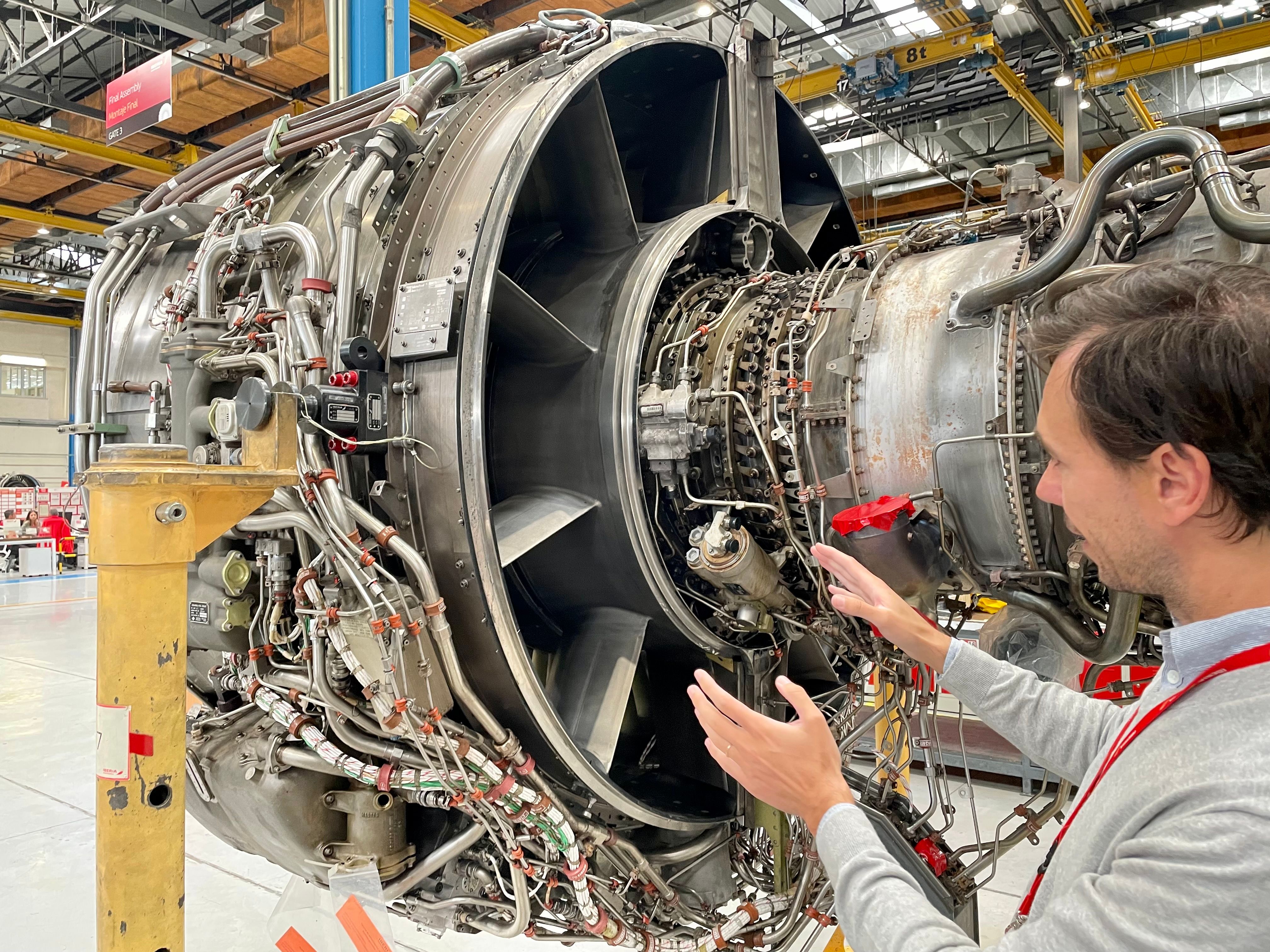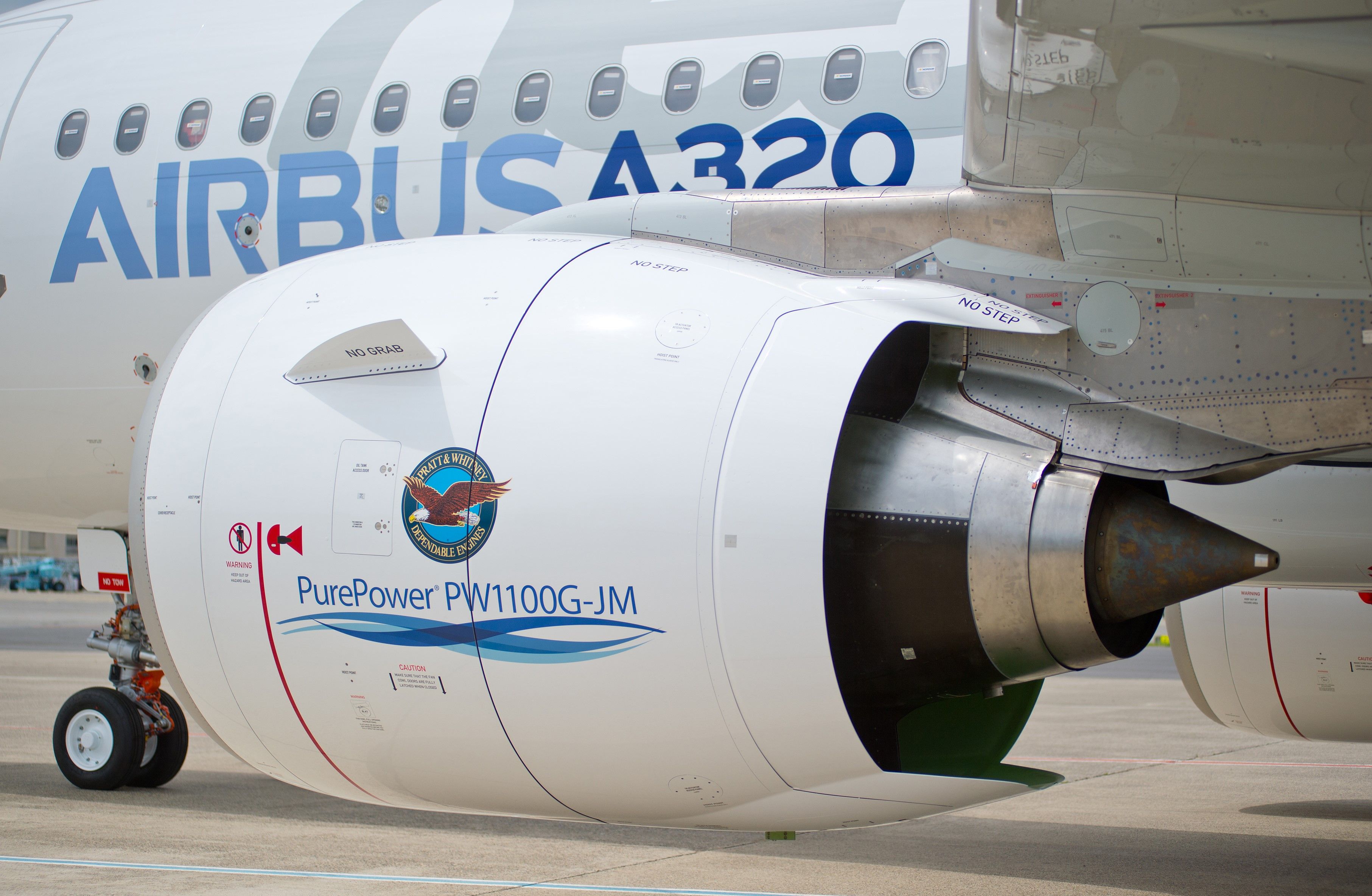Jet engines work by compressing the incoming air through a series of compressors and combining it with atomized fuel in the combustion chamber. The fuel-air mixture is ignited, expanded, and released through the exhaust to produce thrust. Another, larger stream of air merely passes through the bypass stream without being compressed or ignited.
The bypass ratio is the ratio between the mass flow rate of the air bypassing the engine core (secondary flow) to the mass flow rate of the air entering the core of the engine (primary flow). A third stream, parasitic airflow (bleed air), passes from the compressor and is used outside the combustion chamber for cooling and pressurization of various systems. This article explores the three streams of air in the jet engine.
Primary airflow
- Air passing through the engine core
- Core components include compressors, combustor, and turbines
- The compressed air is mixed with atomized fuel to combust and expand
The incoming air from the fan enters a series of low-pressure (LP) compression stages (booster) before entering the high-pressure (HP) compressor. Each stage of compression consists of a rotating component and a stationary component. The air is compressed and conditioned as it passes through each stage. The air velocity decreases as the pressure (and temperature) increase.
Photo: CFM International
Rolls-Royce states about its new UltraFan technology,
“Enhanced with further technologies and innovative high-temperature materials, UltraFan pushes the Advance3 core overall pressure ratio to more than 70:1 for a typical large engine application. UltraFan also features a new geared architecture (power gearbox introduced between the fan and intermediate pressure compressor) to ensure that the fan, compressors and turbines all continue to run at their optimum speed.”
The air from the LP compressor is guided into the HP compressor through the inlet guide vanes (IGVs) to reduce any residual turbulence caused by rotation. The high-temperature pressurized air is mixed with pressurized fuel for combustion. Hot gasses expand, transferring the energy to the HP and LP turbines. The air exists through the engine exhaust, generating thrust.
Parasitic airflow
- Air for cabin pressurization
- Air for cooling and heating systems
- Air for pressurizing sumps, valves, and other internal systems
Parasitic air is used for pressurization and cooling of internal components of the engine. Bleed air from the primary stream is used to pressurize sumps, valves, and other internal systems. Parasitic air is also used for cooling of the sumps and high-temperature components, including turbine blades and nozzles.
Photo: Sumit Singh | Simple Flying
It is noteworthy that while the air is already heated at about 930 degrees F (500 degrees C), it is relatively cooler than temperatures in and around the combustor (~2,730 degrees F/1,500 degrees C).
Parasitic air is also used for cabin pressurization, air conditioning, and other internal systems. It also provides warm air for engine inlet anti-ice and aircraft wing anti-ice systems. Notably, any amount of air taken away from the compression section negatively affects the engine efficiency. However, the bleed air is precisely controlled through numerous valves and provided to critical engine and aircraft systems.
Secondary airflow
- Airflow bypassing the engine core
- Air for cooling the exterior of the engine
- Air for cooling engine components, including casings, shrouds, and the ignition system
Secondary airflow is one that bypasses the engine core and flows on the outside of the engine, providing the majority of engine thrust. The incoming air from the fan is routed through outlet guide vanes (OGVs) to minimize the effect of centrifugal forces from the rotating fan. The secondary airflow keeps the overall engine cooled from the outside while aiding in minimizing engine noise.
Photo: Airbus
A portion of the secondary air is used for further cooling of turbine shrouds and cases. Turbine components expand and contract due to varying temperatures. As a result, the clearance between cases and blades changes, affecting the efficiency of the engine. Secondary air is transmitted to the active clearance control lines installed on turbine cases to optimize the blade clearance at all phases of flight.
Pratt & Whitney states about its Geared Turbofan (GTF) engine technology,
“The Pratt & Whitney GTF Advantage™ engine will extend its lead as the most efficient engine for the A320neo family. This new configuration demonstrates the long runway for growth inherent to the geared fan architecture, along with our commitment to continual investment in technology, innovation and sustainability.”
Since the secondary air temperature largely depends on aircraft altitude, the mass flow of air is controlled through clearance control valves. Secondary air is also used on other external components, including the core compartment and ignition system cooling.




